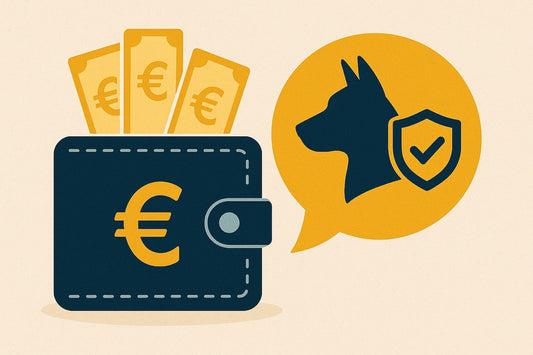The French Bulldog is a popular dog breed that is loved for its charismatic appearance, affectionate personality, and outgoing temperament. But where does this fascinating breed come from and what are the influences that have shaped the distinctive characteristics we know and love today? To answer these questions, it is necessary to go back to the historical roots of this breed.
The influence of Phoenician navigators
The presence of dogs resembling the French Bulldog in ancient art and mythology suggests that their ancestors were present in various ancient cultures. The Phoenician navigators , a famous seafaring people of antiquity, are often cited as having played a key role in the spread of similar dog breeds throughout the Mediterranean world. Artistic depictions of Phoenician dogs sharing physical similarities with the French Bulldog have been discovered, attesting to the longevity and geographical extent of this lineage of dogs.
From mastiffs to great danes
The ancestors of the French bulldogs: the molossers
The. Molossus ,.an ancient type of dog, is often considered one of the common ancestors of the French Bulldog. Molossus were large war and guard dogs, originating from ancient Eurasian cultures such as the Assyrians and Babylonians. They were later adopted by the Greeks and Romans, who continued to use them for these same roles. Although the. Molossus.was different in appearance from the current French Bulldog, it served as the basis for the later development of smaller, more specialized breeds.
English Mastiffs: A Decisive Influence
Beginning in the 12th century, mastiffs were brought to England by Norman sailors and quickly won over the local inhabitants due to their impressive strength and courage. The term "mastiff" derives from the Latin "canis" , meaning dog, and was used to describe these massive, powerful dogs. Over the next few centuries, British breeders domesticated mastiffs, gradually reducing their size while preserving their characteristic features such as the broad chest and strong jaws. This development led to the creation of the English Bulldog , a smaller but still sturdy and muscular dog.
The appearance of the French bulldog: migration and crossbreeding
The first traces of the origin of the French bulldog date back to the 19th century in France. English workers emigrated to Normandy and took their bulldogs with them to work as guard dogs, rat catchers, or simply as pets. Seduced by the appearance and temperament of the English bulldogs, the French decided to create their own version, by crossbreeding with other breeds.
The role of French terriers
Local breeders began crossing the English Bulldog with various French Terriers , including the Parisian Ratter. These crosses would influence not only the size of the French Bulldog but also its lively and playful personality. It was from the terriers that the breed would also acquire its distinctive bat-shaped ears, which would earn it the name "rabbit-eared bulldog" at the time.
A breed in its own right: official recognition
The popularity of the French bulldog quickly spread throughout France and to various social classes: from workers to famous artists of the time. However, it was not until 1880 that the first exhibition devoted exclusively to French bulldogs was organized.
The year 1898 marked a turning point in the history of this breed with the creation of the first French bulldog club , the "Société Centrale du Bouledogue Français". It was also at this time that the official standard of the breed was written, precisely defining its physical and behavioral characteristics.
Throughout the centuries, the French Bulldog has captivated dog lovers with its unique appearance and endearing personality. Its diverse and complex origins offer a fascinating insight into the evolution of dog breeds and the influence of human cultures on their development.







